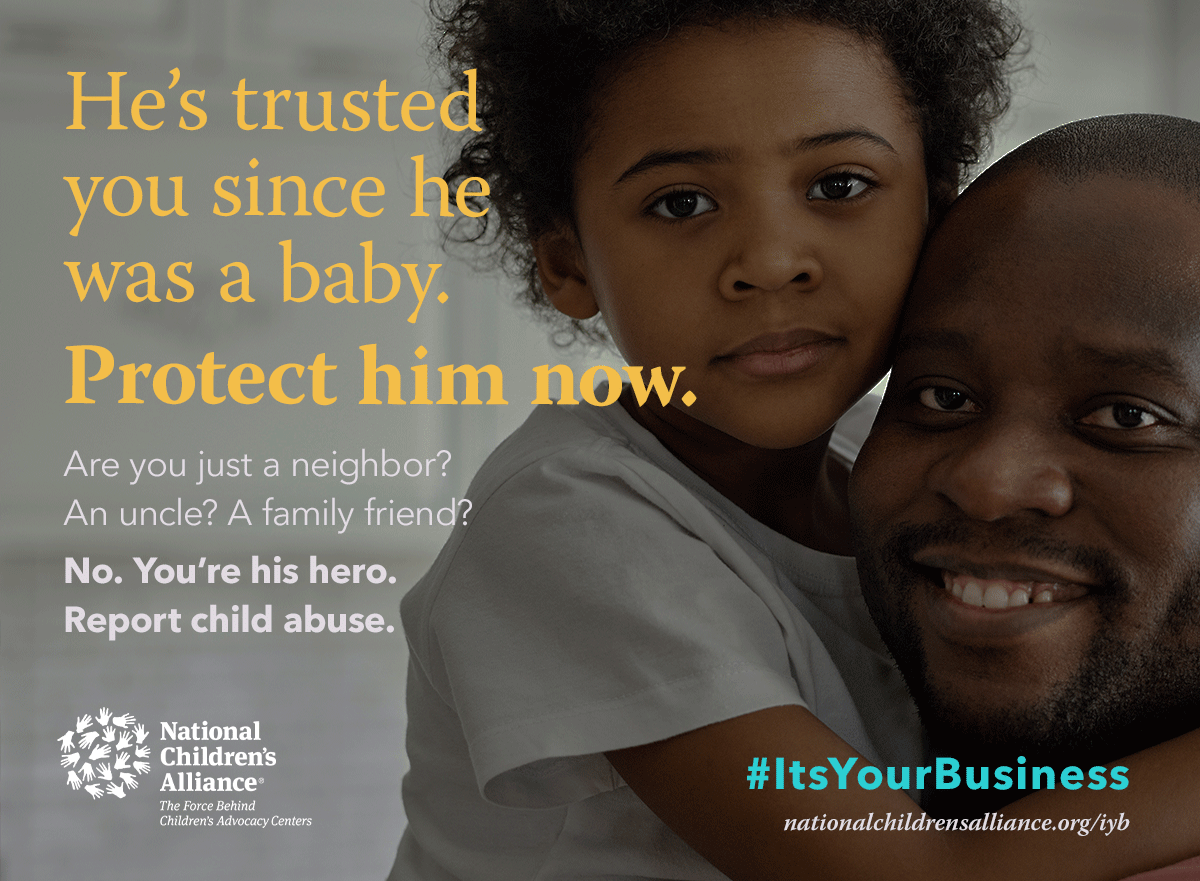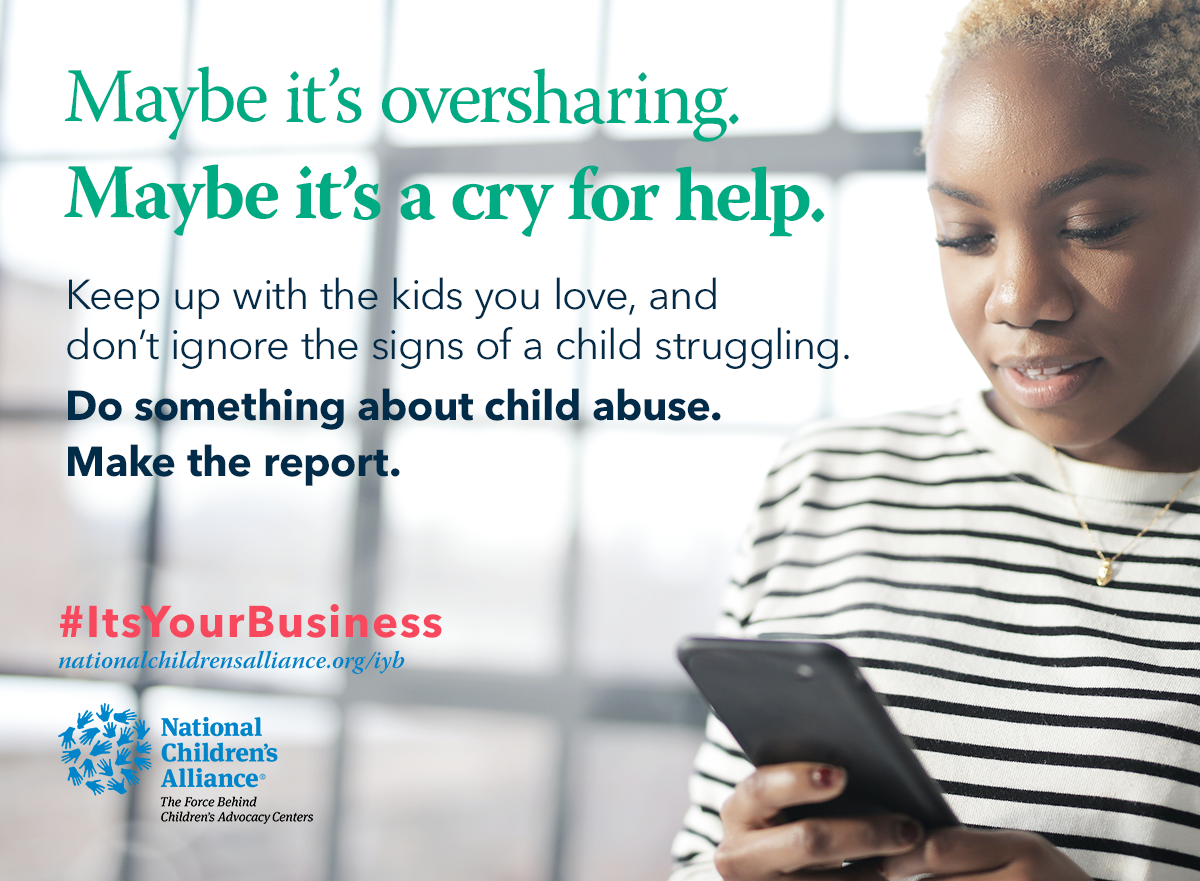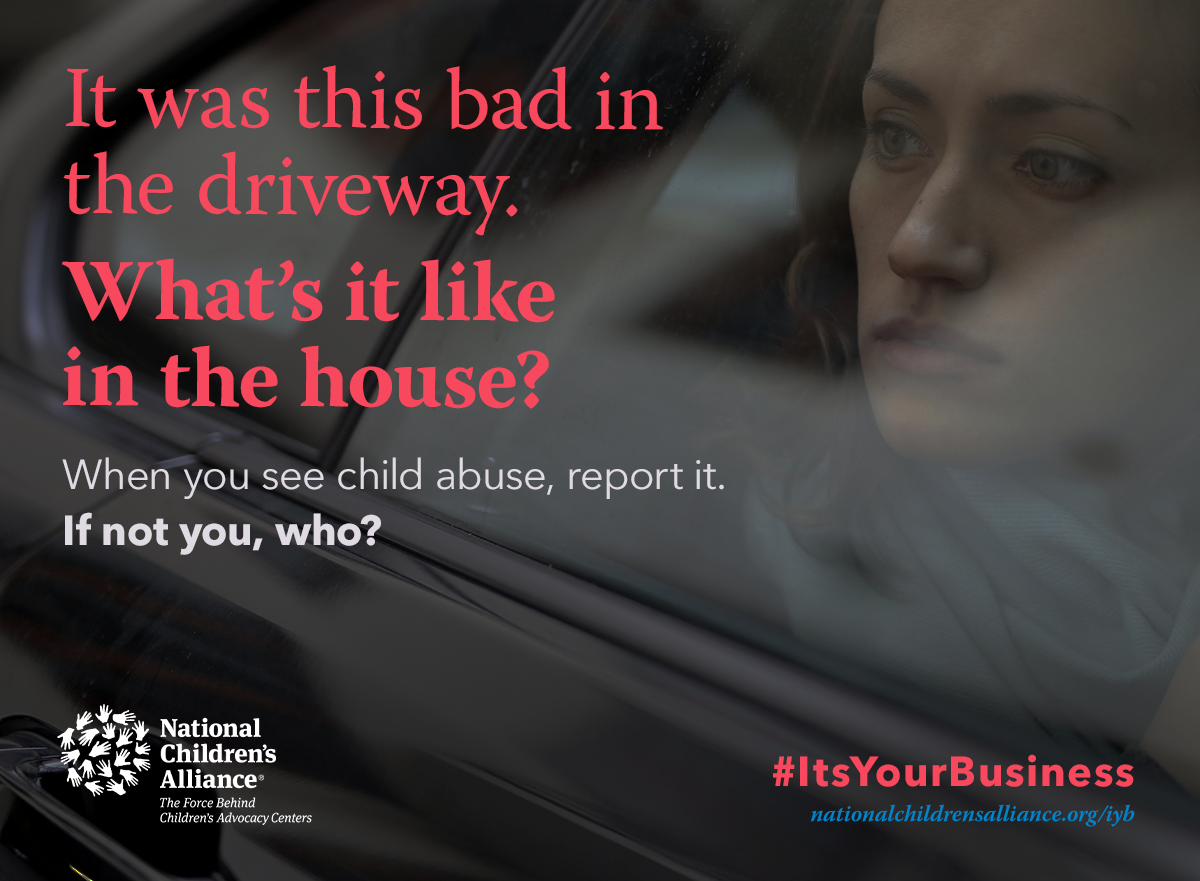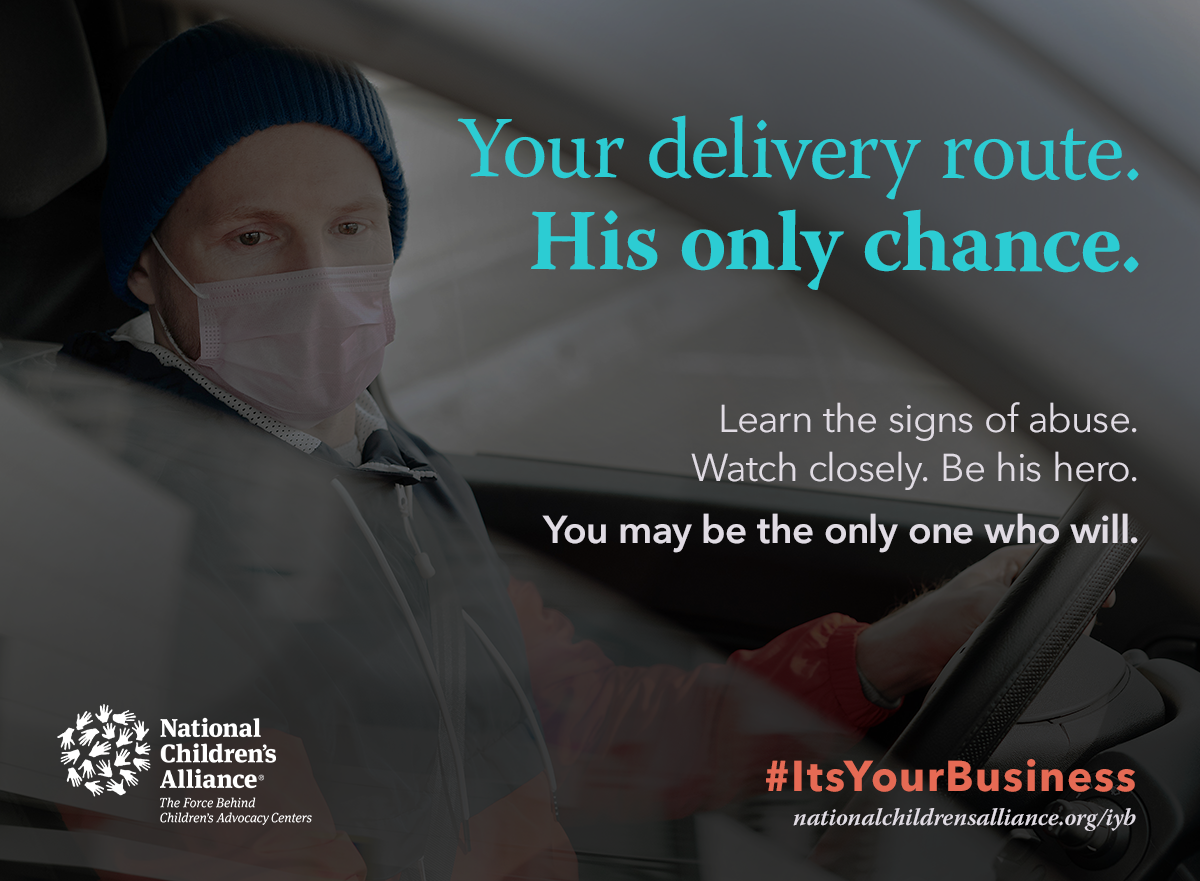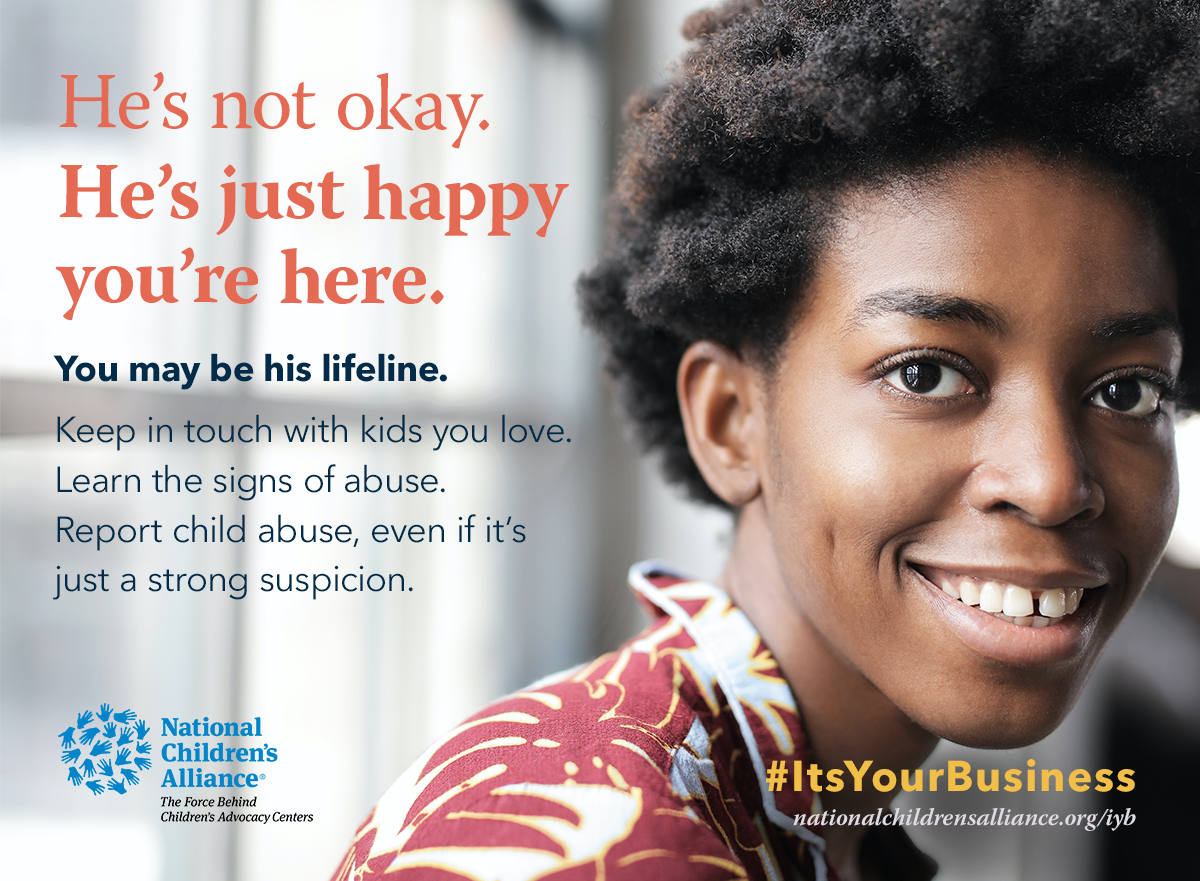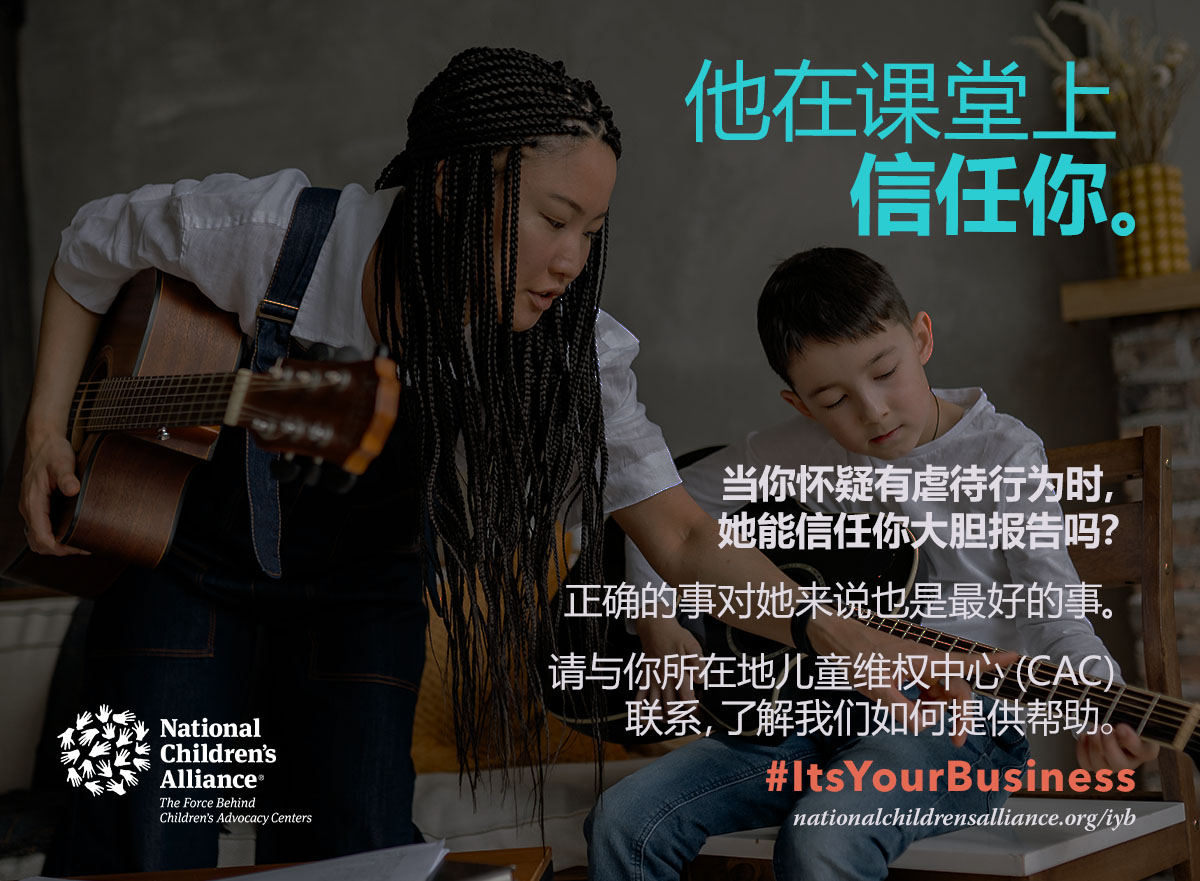#ItsYourBusiness
Child abuse thrives when good people decide it’s none of their business.
Look for the signs of child abuse, and learn what it takes to make the report. Whether you’re a teacher, doctor, family member, counselor, coach, or just a friend, you can’t depend on anyone else to do something about what might be happening. Suspect child abuse? Don’t for a second think this is none of your business.
It’s your business.
Do something. You may be the only one who will.
New content for National Child Abuse Prevention Month, April 2024!
We have a number of new materials, including prevention messages on grooming, sexting, and other critical issues for keeping kids safe from abuse.
Right now: Rally your community.
Tell your neighbors: If you don’t stop child abuse, who will? Be sure to share these memes on your social media, link people to this page, and have critical conversations with your friends, family, neighbors and community and institutional leaders.
You’re only one person. But you have everything it takes to build an abuse-proof community. To ensure no child is left to suffer in silence, and to raise a visible army of support for kids, as many people as possible need to take these three steps. Share these other memes with your circles.
Click on each meme below to view, or download it. They’re sized perfectly to share on your socials. Link to nationalchildrensalliance.org/IYB. The next time someone tells you, “it’s none of your business,” you can confidently say, #ItsYourBusiness. It’s my business. It’s everyone’s business.
(Need these resources in other languages? You can download many in Spanish, Chinese, and Vietnamese.)
You can also join us for the next 30 days in April for 30 messages of prevention, common responsibility, and vibrant community. If you want to follow us on our 30 day journey, everything you need is here.
#ItsYourBusiness videos
See these new, short, sharable #ItsYourBusiness videos. We’ll be adding more of these resources, so continue to check back!
Here are three steps you can take to help kids now.
Step 1: Learn the signs of abuse
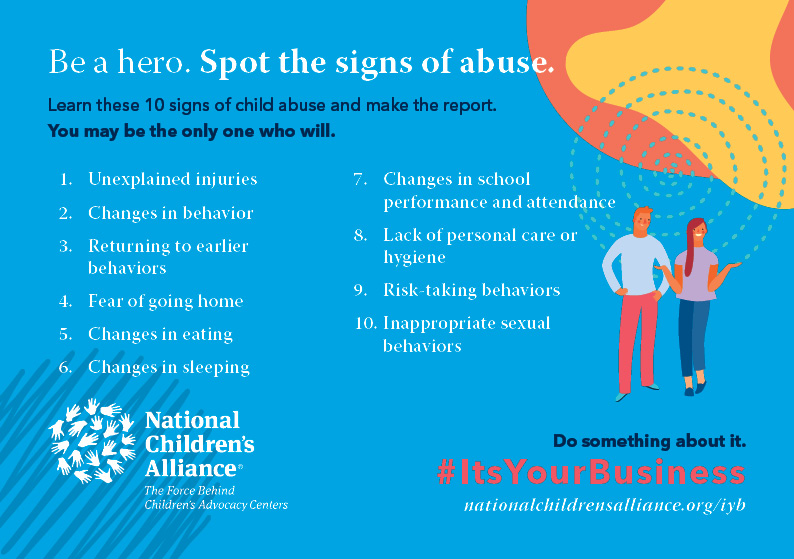
Here are 10 common signs of child abuse.
Look out for them, and make the report when you see them.
10 signs of child abuse
- Unexplained Injuries Visible signs of physical abuse may include unexplained burns or bruises in the shape of objects. You may also hear unconvincing explanations of a child’s injuries.
- Changes in behavior Abuse can lead to many changes in a child’s behavior. Abused children often appear scared, anxious, depressed, withdrawn or more aggressive.
- Returning to earlier behaviors Abused children may display behaviors shown at earlier ages, such as thumb-sucking, bed-wetting, fear of the dark or strangers. For some children, even loss of acquired language or memory problems may be an issue.
- Fear of going home Abused children may express apprehension or anxiety about leaving school or about going places with the person who is abusing them.
- Changes in eating The stress, fear and anxiety caused by abuse can lead to changes in a child’s eating behaviors, which may result in weight gain or loss.
- Changes in sleeping Abused children may have frequent nightmares or have difficulty falling asleep, and as a result may appear tired or fatigued.
- Changes in school performance and attendance Abused children may have difficulty concentrating in school or have excessive absences, sometimes due to adults trying to hide the child’s injuries from authorities.
- Lack of personal care or hygiene Abused and neglected children may appear uncared for. They may present as consistently dirty and have severe body odor, or they may lack sufficient clothing for the weather.
- Risk-taking behaviors Young people who are being abused may engage in high-risk activities such as using drugs or alcohol or carrying a weapon.
- Inappropriate sexual behaviors Children who have been sexually abused may exhibit overly sexualized behavior or use explicit sexual language.
These aren’t the only signs, but they’re great examples of what to look out for, what to ask kids and family members questions about, and what types of changes in behavior you can expect to put yourself in the prevention mindset.
Get this resource in other languages
Step 2: Learn the facts about online child abuse

Educate yourself and others about what child abuse looks like when it’s happening online, and what to do next.
Technology is ubiquitous. With smartphones, there’s potentially a predator in every child’s pocket.
Yet the steps to spot and stop online child abuse are the same tried and true steps that work to prevent offline abuse as well: Look, listen, reassure, and report. Whether you’re a parent, a family member, a youth-serving professional, or even just a gaming buddy, you can do so much to help stop the hurt and start the healing.
Print and share this card to learn how online abuse looks when it’s happening to a child who matters to you, and what to do next.
How online abuse looks
- Sudden dramatic increase in time spent
online - Seem distant or angry after going online
or while texting - Secrecy about who they’re talking to or
what they’re doing online - Sudden appearance of many new phone,
social, or email contacts - Anxious, self-harming, or behavioral
problems
What to do about it
- Listen carefully to what they’re saying
- Tell them they did the right thing by
telling you - Tell them it’s not their fault and that you
take this seriously - Don’t confront the alleged abuser
- Explain to the child what will happen
next, then report to authorities.
Step 3: Make the report

Even if it’s just a suspicion of child abuse, gather your information and make the report to your local authorities.
Many of us are nervous about reporting child abuse, or even wonder if we’re doing the right thing. The fact is, there’s nothing better you could do for an abused child than report what’s happening to them. If you want to know more about how the process of serving children and families works in the U.S., and what resources and experience the child will have in our care, contact your local Children’s Advocacy Center (CAC).
Other resources
#ItsYourBusiness in other languages
Many #ItsYourBusiness resources are now available in Spanish, Chinese, and Vietnamese, thanks to Children’s Advocacy Center of Santa Clara County and the Office of the District Attorney-County of Santa Clara. These messages are customizable with your own agency logo, URL, or hotline number as well. Please maintain the hashtag #ItsYourBusiness and the NCA logo if you plan to customize these resources.
#ItsYourBusiness videos in other languages
Check out these new, short, sharable video resources in Spanish, Chinese and Vietnamese.














